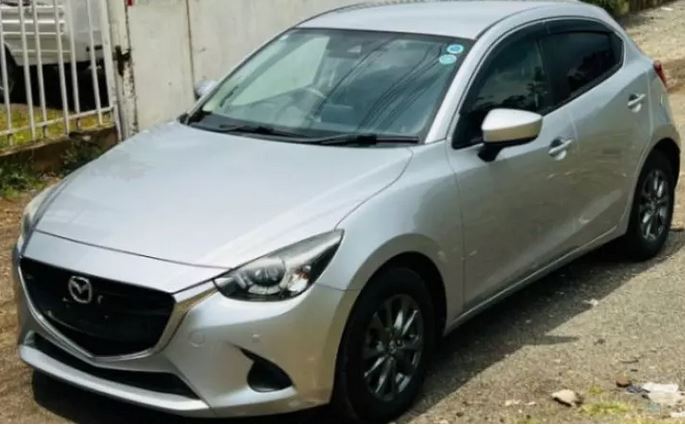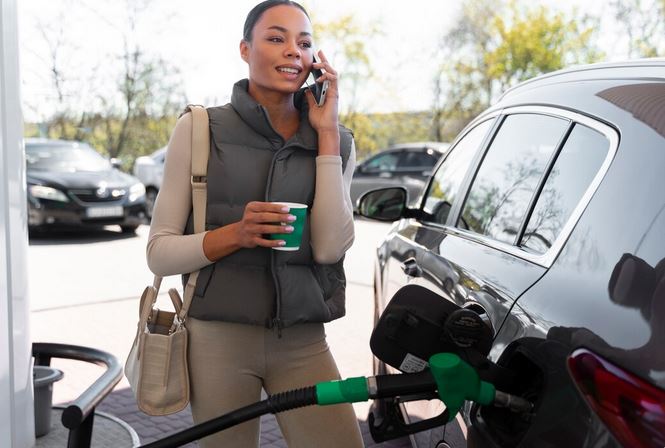Rising fuel prices have made Kenyan car buyers smarter about their choices. Whether you’re navigating Nairobi’s traffic or cruising along Mombasa Road, fuel efficiency can save you thousands of shillings monthly.
This guide breaks down everything you need to know about the most fuel efficient cars in Kenya that won’t drain your wallet at the pump. We’ll explore affordable options, maintenance costs, and practical tips to maximize your investment.

Understanding Fuel Efficiency in the Kenyan Context
Fuel efficiency isn’t just about kilometers per liter. In Kenya’s unique driving environment, several factors determine how much you’ll actually spend on fuel.
What Makes a Car Fuel Efficient?
Modern fuel-efficient vehicles combine smart engineering with practical design. Engine size plays a crucial role, with smaller engines (1000cc to 1500cc) typically consuming less fuel in urban settings.
Hybrid technology has revolutionized fuel consumption. According to the U.S. Department of Energy, hybrid vehicles can achieve 20-35% better fuel economy than conventional gasoline vehicles, making them increasingly popular in Kenyan cities.
Weight matters significantly too. Lighter vehicles require less energy to move, which directly translates to better fuel economy on our roads.
Kenya’s Driving Conditions and Fuel Consumption
Nairobi’s notorious traffic jams test any vehicle’s efficiency. Stop-and-go driving increases fuel consumption by up to 40% compared to highway cruising.
Our road conditions vary dramatically. From smooth tarmac on major highways to rough murram roads in rural areas, your vehicle needs to handle diverse terrains without guzzling fuel.
Climate also affects performance. Coastal humidity and highland altitude changes impact engine efficiency differently, something every Kenyan driver should consider.
How to Calculate Real Fuel Costs
Understanding your actual fuel expenses requires simple math. Divide the distance traveled by liters consumed to get your km/l ratio.
Track your monthly fuel receipts and mileage. Most Kenyan drivers are surprised to discover their real consumption differs from manufacturer claims by 15-25%.
Factor in maintenance costs too. A poorly maintained engine can increase fuel consumption by up to 30%, according to Consumer Reports, making regular servicing essential for true efficiency.

Top Cheapest Fuel-Efficient Cars in Kenya
Finding affordable vehicles that sip rather than gulp fuel requires knowing which models deliver real value in Kenyan conditions.
Budget-Friendly Japanese Imports Under KES 1M
Toyota Vitz (1000cc – 1300cc)
The Vitz remains Kenya’s darling for good reason. This compact hatchback delivers 18-22 km/l in mixed driving conditions.
A 2010-2015 model costs between KES 600,000 and KES 900,000. Parts are readily available countrywide, and every mechanic knows how to service it.
Insurance and maintenance stay affordable. Expect to spend around KES 8,000-12,000 annually on basic servicing.
Nissan March
The March competes directly with the Vitz, offering similar efficiency at 17-20 km/l. Its slightly larger interior appeals to families.
Prices range from KES 550,000 to KES 850,000 for 2010-2015 models. The CVT transmission provides smooth driving but requires specialized maintenance.
Mazda Demio
Mazda’s Demio combines sporty styling with efficiency, achieving 16-19 km/l. The Skyactiv technology improves performance without sacrificing economy.
Budget KES 650,000 to KES 950,000 for well-maintained units. Slightly higher maintenance costs are offset by excellent reliability.

Best Sedans for Fuel Economy (KES 1M – 2M)
Toyota Axio (1500cc)
The Axio dominates Kenya’s sedan market with good reason. This reliable workhorse delivers 15-18 km/l while offering comfortable space for five adults.
Expect to pay KES 1.2M to KES 1.8M for 2012-2016 models. The hybrid variant pushes efficiency to 20-23 km/l but costs KES 200,000-300,000 more.
Boot space accommodates family luggage easily. Ground clearance handles Kenyan roads better than most sedans in this class.
Nissan Sylphy
The Sylphy offers premium features at mid-range prices. Fuel consumption averages 14-17 km/l, competitive for its size.
Prices start at KES 1.3M for 2013 models, reaching KES 2M for newer variants. The spacious cabin and quiet ride make long journeys comfortable.
Honda Fit Hybrid
Don’t let the “Fit” name fool you – this practical hatchback-sedan hybrid delivers exceptional 22-25 km/l efficiency.
Investment ranges from KES 900,000 to KES 1.5M depending on year and condition. The hybrid system requires specialized knowledge, so choose mechanics carefully.

Comparison Table: Top 10 Fuel Efficient Cars in Kenya
| Model | Engine Size | Fuel Economy (km/l) | Price Range (KES) | Best For |
| Toyota Aqua | 1500cc Hybrid | 23-26 | 1.1M – 1.6M | Urban commuting |
| Honda Fit Hybrid | 1300cc Hybrid | 22-25 | 900K – 1.5M | Daily driving |
| Toyota Vitz | 1000-1300cc | 18-22 | 600K – 900K | Budget buyers |
| Nissan Note | 1200cc | 17-20 | 700K – 1.1M | Family use |
| Mazda Demio | 1300cc | 16-19 | 650K – 950K | City driving |
| Toyota Axio | 1500cc | 15-18 | 1.2M – 1.8M | Professional use |
| Suzuki Swift | 1200cc | 17-20 | 800K – 1.2M | Young professionals |
| Nissan March | 1200cc | 17-20 | 550K – 850K | First-time buyers |
| Toyota Fielder | 1500cc | 14-17 | 1M – 1.5M | Cargo needs |
| Nissan Sylphy | 1800cc | 14-17 | 1.3M – 2M | Comfort seekers |
Hybrid vs. Conventional: What Works Best in Kenya?
The hybrid versus conventional debate splits Kenyan car buyers. Understanding both technologies helps you make informed decisions.
Advantages of Hybrid Vehicles
Hybrid cars excel in Nairobi’s congested streets. The electric motor handles stop-and-go traffic, saving fuel when it matters most.
Lower emissions mean you’re contributing less to air pollution. The Environmental Protection Agency confirms hybrids reduce greenhouse gas emissions by 25-35% compared to conventional vehicles.
Long-term fuel savings add up quickly. At current Kenyan fuel prices (KES 180-200 per liter), hybrids can save you KES 15,000-25,000 annually.
Resale value remains strong. Hybrids hold their value better because running costs stay predictable, attracting savvy secondhand buyers.
Challenges with Hybrid Cars in Kenya
Battery replacement costs scare many buyers. A hybrid battery costs KES 150,000-300,000, though most last 8-10 years with proper care.
Finding qualified mechanics remains challenging. Not every garage understands hybrid systems, limiting your service options outside major towns.
Initial purchase price runs higher. You’ll pay KES 200,000-400,000 more for hybrid versions of the same model.
Upcountry travel raises range anxiety. While hybrids work perfectly around cities, concerns about specialized service limit their rural appeal.
Cost Analysis: 5-Year Ownership Comparison
Let’s compare a Toyota Vitz (conventional) versus Toyota Aqua (hybrid) over five years with 15,000 km annual mileage.
Toyota Vitz (Conventional)
- Purchase: KES 750,000
- Fuel costs (20 km/l): KES 675,000
- Maintenance: KES 200,000
- Insurance: KES 250,000
- Total: KES 1,875,000
Toyota Aqua (Hybrid)
- Purchase: KES 1,200,000
- Fuel costs (25 km/l): KES 540,000
- Maintenance: KES 250,000
- Insurance: KES 300,000
- Total: KES 2,290,000
The hybrid costs KES 415,000 more over five years. However, if fuel prices increase or your mileage exceeds 20,000 km annually, the gap narrows significantly.

Diesel vs. Petrol: Making the Right Choice
Fuel type significantly impacts your long-term costs and driving experience in Kenya.
When Diesel Makes Sense
Diesel engines deliver superior fuel economy on highways. If your daily commute exceeds 50 km or involves frequent upcountry travel, diesel saves money.
Modern diesel vehicles achieve 18-25 km/l, about 20-30% better than petrol equivalents. This advantage multiplies with higher mileage.
Diesel engines last longer typically. With proper maintenance, diesel powertrains easily exceed 400,000 km, according to Edmunds.
Torque advantage helps on rough roads. Diesel engines provide more pulling power, beneficial for Kenya’s varied terrain.
Petrol’s Advantages in Urban Settings
Petrol vehicles cost less upfront. You’ll save KES 200,000-400,000 compared to equivalent diesel models.
Maintenance stays simpler and cheaper. Every mechanic handles petrol engines confidently, while diesel requires more specialized knowledge.
Nairobi’s traffic favors petrol. Diesel engines don’t perform efficiently in constant stop-and-go conditions.
Cleaner burning means fewer emissions concerns. Modern petrol engines produce less particulate matter, important for environmental health.
Current Fuel Prices and Long-Term Projections
Diesel currently costs slightly less than petrol in Kenya. The price gap of KES 5-10 per liter matters when you’re consuming hundreds of liters monthly.
Government policy affects pricing. Tax structures may change, potentially narrowing or widening the diesel-petrol price difference.
International crude oil prices drive local costs. Kenya’s fuel prices typically follow global trends with a 2-3 month lag.
Best Car Dealerships and Buying Tips in Kenya
Knowing where and how to buy saves money and prevents costly mistakes.
Trusted Dealerships and Import Options
SBT Japan and BE FORWARD dominate Kenya’s import market. These platforms offer transparent pricing and vehicle history reports.
Local dealerships like DT Dobie and Toyota Kenya provide warranty coverage. You’ll pay premium prices but gain peace of mind.
Luthuli Avenue remains popular for budget buyers. However, exercise extreme caution – thoroughly inspect any vehicle and verify documentation.
Inspection Checklist Before Purchase
Check service history religiously. A well-maintained 2012 model beats a neglected 2015 every time.
Test drive in various conditions. Highway performance differs dramatically from city driving – experience both before committing.
Verify mileage authenticity. Odometer tampering remains common, so look for service stickers and wear patterns that confirm claimed kilometers.
Examine hybrid battery health for hybrid vehicles. Request a diagnostic check – battery replacement costs could eliminate any savings.
Confirm import duty payment. Avoid vehicles with questionable customs clearance – complications arise when registering such cars.
Negotiation Strategies for Best Prices
Research thoroughly before viewing. Know the fair market value – websites like Cheki Kenya provide current pricing data.
Point out specific issues respectfully. Visible wear, maintenance needs, or cosmetic damage justify price reductions.
Timing matters significantly. Month-end and quarter-end pressure dealers to meet targets, potentially securing better deals.
Bring cash for serious negotiations. Dealers often discount further when immediate payment is guaranteed.

Maximizing Fuel Efficiency: Practical Driving Tips
Even the most efficient car wastes fuel with poor driving habits. Small changes yield significant savings.
Maintenance Practices That Improve Efficiency
Regular oil changes keep engines running efficiently. Follow manufacturer recommendations – typically every 5,000-7,500 km for Kenyan conditions.
Tire pressure affects fuel consumption dramatically. Under-inflated tires increase rolling resistance by up to 15%, wasting fuel unnecessarily.
Air filter cleaning improves combustion. Clogged filters reduce engine efficiency by 10-15%, particularly problematic in Kenya’s dusty conditions.
Wheel alignment prevents drag. Misaligned wheels create resistance, forcing your engine to work harder and consume more fuel.
Driving Habits That Save Fuel
Gentle acceleration preserves fuel. Aggressive takeoffs can increase consumption by 30-40% compared to gradual acceleration.
Anticipate traffic flow ahead. Maintaining steady speeds and avoiding unnecessary braking conserves momentum and saves fuel.
Remove excess weight from your vehicle. Every 50 kg of unnecessary cargo reduces efficiency by approximately 2%.
Use air conditioning wisely. AC increases fuel consumption by 10-20%, so open windows work better at lower speeds.
Coast to stops when safe. Releasing the accelerator early and using engine braking reduces fuel consumption significantly.
Technology Tools for Monitoring Consumption
Fuel tracking apps help identify patterns. Apps like Fuelio and Drivvo provide detailed consumption analytics.
OBD-II scanners connect to your car’s computer. These affordable devices reveal real-time fuel economy and engine performance data.
Route planning apps minimize distance. Google Maps and Waze help avoid congestion, reducing time spent idling in traffic.

Insurance and Registration Costs for Fuel-Efficient Cars
Hidden costs beyond fuel affect your total ownership expenses significantly.
Comprehensive vs. Third-Party Coverage
Comprehensive insurance costs 3-4% of vehicle value annually. For a KES 1M car, expect KES 30,000-40,000 yearly.
Third-party coverage costs KES 5,000-8,000 annually regardless of vehicle value. However, it covers only damage you cause to others.
Most financiers require comprehensive coverage. If you’re taking a loan, you won’t have the third-party option.
Annual Registration and Compliance Costs
Registration fees vary by engine size. Vehicles under 1500cc pay approximately KES 2,400 annually, while larger engines cost more.
NTSA inspection costs KES 1,000-2,000. Your vehicle needs this annual inspection to remain roadworthy and legal.
Third-party insurance forms part of registration. The mandatory cover costs roughly KES 3,500 and must be current during registration.
Budget KES 6,000-8,000 total for basic annual compliance. This covers inspection, registration, and mandatory third-party insurance.
How Vehicle Value Affects Total Costs
Newer vehicles cost more to insure. A 2020 model requires higher premiums than a 2015 model with similar specifications.
Depreciation works in your favor eventually. As vehicle value decreases, comprehensive insurance costs drop proportionally.
Hybrid vehicles may qualify for discounts. Some insurers offer reduced premiums for environmentally friendly vehicles – always ask.
Future of Fuel-Efficient Cars in Kenya
Kenya’s automotive landscape continues evolving rapidly. Understanding trends helps you make future-proof decisions.
Electric Vehicles: Are They Coming?
EV infrastructure remains limited. Kenya has fewer than 50 public charging stations, mostly concentrated in Nairobi.
Government incentives are increasing. Tax exemptions on EVs make them more affordable, though prices still exceed most buyers’ budgets.
Chinese brands are entering aggressively. BYD and other manufacturers see Kenya as a growing market, potentially bringing affordable EVs soon.
Battery technology improves constantly. Range anxiety decreases as new models achieve 300-400 km per charge, sufficient for most Kenyan driving.
Government Policies and Fuel Standards
Emission standards are tightening. Kenya’s adoption of stricter regulations may phase out older, less efficient vehicles.
Import restrictions on older cars continue. The government limits imports of vehicles over eight years old, affecting available options.
Biofuel initiatives gain traction. Ethanol blending and biodiesel could change fuel composition and pricing in coming years.
Investment Recommendations for 2025-2027
Hybrid vehicles offer the best transition technology. They’re practical now while positioning you for a more electric future.
Avoid diesel for purely urban use. Tightening emissions standards and potential tax changes make diesel less attractive long-term.
Consider resale value carefully. Choose popular models with established service networks – they’ll remain easier to sell.
Budget for technology adaptation. Vehicle technology evolves quickly, so prepare for potential retrofit needs or earlier replacement cycles.

FAQs
What is the most fuel-efficient car under KES 800,000 in Kenya?
The Toyota Vitz (1000cc) offers the best fuel efficiency under KES 800,000, achieving 18-22 km/l in mixed driving conditions. The Nissan March is a close alternative with similar efficiency at 17-20 km/l. Both models have excellent parts availability and low maintenance costs, making them ideal for budget-conscious buyers who prioritize fuel economy.
Are hybrid cars worth buying in Kenya considering battery replacement costs?
Yes, hybrid cars are worth buying if you drive frequently in urban traffic. While battery replacement costs KES 150,000-300,000, most hybrid batteries last 8-10 years. Annual fuel savings of KES 15,000-25,000 offset the potential battery cost over the vehicle’s lifetime. Choose hybrids if your annual mileage exceeds 15,000 km for maximum value.
Which is cheaper to maintain long-term: diesel or petrol cars?
Petrol cars are cheaper to maintain long-term for urban driving. Maintenance costs run 15-20% less than diesel, and repairs are simpler because every mechanic handles petrol engines. However, if you drive over 25,000 km annually with significant highway travel, diesel’s superior fuel economy (20-30% better) compensates for higher maintenance costs.
How can I verify a used car’s actual fuel consumption before buying?
Test drive the vehicle for at least 50 km in various conditions, including highway and city traffic. Fill the tank completely, reset the trip meter, drive your normal routes, then refill and calculate km/l. Also request service records showing previous fuel consumption patterns. Don’t rely solely on seller claims or manufacturer specifications.
What are the hidden costs of owning fuel-efficient cars in Kenya?
Hidden costs include hybrid battery diagnostic checks (KES 3,000-5,000), specialized mechanics charging premium rates, higher insurance premiums for newer models, and potential import duty complications for grey imports. Also factor tire replacements (KES 25,000-40,000 per set every 40,000-50,000 km) and brake servicing (KES 15,000-25,000) which many buyers overlook when calculating ownership costs.
Do fuel-efficient cars perform well on Kenyan rural roads?
Most fuel-efficient cars have lower ground clearance designed for urban roads. The Toyota Vitz, Nissan March, and similar compact models struggle on rough murram roads. If you frequently travel upcountry, consider the Toyota Fielder or Nissan Wingroad which offer better ground clearance while maintaining reasonable fuel efficiency of 14-17 km/l.
How much can I realistically save annually with a fuel-efficient car?
Savings depend on your mileage and current vehicle. Switching from a 10 km/l vehicle to a 20 km/l model saves approximately KES 90,000 annually at 15,000 km yearly mileage (assuming KES 180/liter). For 25,000 km annual mileage, savings reach KES 150,000. Calculate using your specific mileage and current consumption for accurate projections.
What’s the best time of year to buy fuel-efficient cars in Kenya?
December and March offer the best deals. Dealerships clear inventory for new stock during these months, offering significant discounts. Additionally, many Kenyans sell vehicles during financial strain periods around March (post-school fees) and September. Month-end and quarter-end also bring desperation pricing from dealers needing to meet sales targets.
Also Read: The Most Expensive Cars in Kenya (See the Top 20!)


Leave a Reply